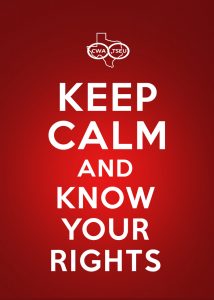 Emergency Paid Sick Leave
Emergency Paid Sick Leave
What the Bill Does:
The Families First Coronavirus Response Act expands access to emergency paid sick leave to as many as 87 million U.S. workers. Many of these workers currently have no paid leave and are being forced to choose between their paycheck, their health, and the health of the people around them. This is a critical step toward protecting families’ financial security and mitigating the spread of the coronavirus.
Who Is Eligible?
- Employees at companies with fewer than 500 employees
- Local, state, and federal government employees
- Employees who work under a multiemployer collective agreement and whose employers pay into a multiemployer plan.
What Are They Eligible For?
- Eligible full-time employees are entitled to two weeks (80 hours) of fully paid time off (up to $511 per day) to self-quarantine, seek a diagnosis or preventive care, or receive treatment for COVID-19.
Eligible part-time employees are entitled to fully paid time off (up to $511 per day) for the typical number of hours that they work in a typical two-week period to self-quarantine to seek a diagnosis or preventive care, or receive treatment for COVID-19. - Eligible full-time employees are entitled to two weeks (80 hours) paid time off at 2/3 of their regular pay (up to $200 per day) to care for a family member or to care for a child whose school has closed, or if their child care provider is unavailable due to COVID-19.
Eligible part-time employees are also entitled to the typical number of hours that they work in a typical two-week period at two-thirds of their typical pay (up to $200 per day) to care for a child whose school has closed, or if their child care provider is unavailable, due to COVID19.
Who Pays for the Emergency Paid Sick Leave?
- Employers initially front the cost of emergency paid sick leave but will be fully reimbursed by the federal government within 3 months.
- The reimbursement will cover both the wages paid and the employer’s contribution to employee health insurance premiums during the period of leave.
- Employers will be reimbursed through a refundable tax credit that counts against employers’ payroll tax, which all employers pay regardless of non-profit/for-profit status.
- Employers will submit emergency paid sick leave expenses as part of their estimated quarterly tax payments. If employer’s costs more than offset their tax liability, they will get a refund from the IRS.
Emergency Paid Family Leave
What the Bill Does:
In response to widespread and potentially prolonged school closures, the Families First Coronavirus Response Act provides families with critical protections to ensure that workers can care for their children without sacrificing their paycheck.
Who Is Eligible?
- Employees at companies with fewer than 500 employees
State and local government employees and certain federal government employees - Employees who work under a multiemployer collective agreement and whose employers pay into a multiemployer plan
What Are They Eligible For?
- Eligible full-time employees and part-time employees are entitled to 12 weeks of job-protected leave to take care for their children in the event of a school closure or their child care provider is unavailable do to COVID-19.
- The 12 weeks of job-protected leave include two weeks of unpaid leave, followed by 10 weeks of paid leave. Eligible employees may elect or be required to overlap the initial two weeks of unpaid leave with two weeks of other paid leave they have available. Eligible employees will receive a benefit from their employers that will be no less than two-thirds of the employee’s usual pay.
Who Pays for the Emergency Paid Family Leave?
- Employers initially front the cost of emergency paid sick leave but will be fully reimbursed by the federal government within 3 months.
- The reimbursement will cover both the wages paid and the employer’s contribution to employee health insurance premiums during the period of leave.
- Employers will be reimbursed through a refundable tax credit that counts against employers’ payroll tax, which all employers pay regardless of non-profit/for-profit status.
- Employers will submit emergency paid sick leave expenses as part of their estimated quarterly tax payments. If employer’s costs more than offset their tax liability, they will get a refund from the IRS.
There are six qualifying reasons for coverage under this bill. The National Law Review Describes them as follows:
- The employee is subject to a federal, state, or local quarantine or isolation order related to Covid-19;
- the employee has been advised by a health care provider to self-quarantine due to concerns related to Covid-19;
- the employee is experiencing symptoms of Covid-19 and seeking medical diagnosis;
- the employee is caring for an individual who is subject to a federal, state, or local quarantine order, or the individual has been advised to self-quarantine due to concerns related to Covid-19;
- the employee is caring for the employee’s son or daughter, if the child’s school or child care facility has been closed or the child’s care provider is unavailable due to Covid-19 precautions; or
- the employee is experiencing any other substantially similar condition specified by Health and Human Services in consultation with the Department of the Treasury and the Department of Labor.
Benefits for Employees
- Normal FMLA is unpaid, but under the FFCRA, employees who are on sick leave because they are sick can receive their full pay, up to $511 per day, or $5,110 total.
- Leave taken to care for children whose schools or day care facilities have closed is paid at two-thirds the employee’s regular rate of pay, with a maximum of $200 per day or $10,000 total.
- Employers cannot force you to use up your vacation or other sick time before receiving this benefit.
- There is a 10-day waiting period before this benefit applies. Employees can use existing sick or vacation time to cover these days.